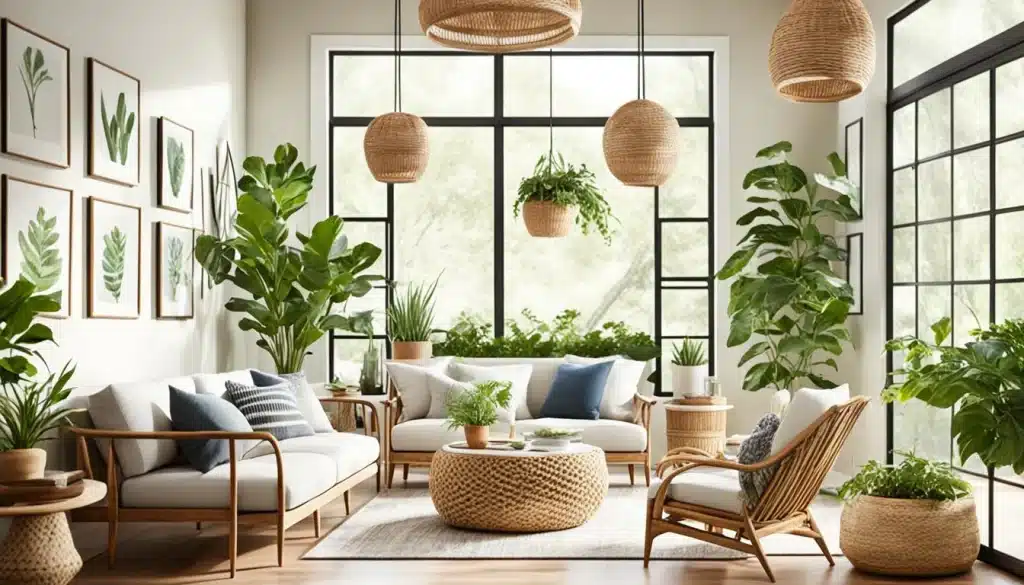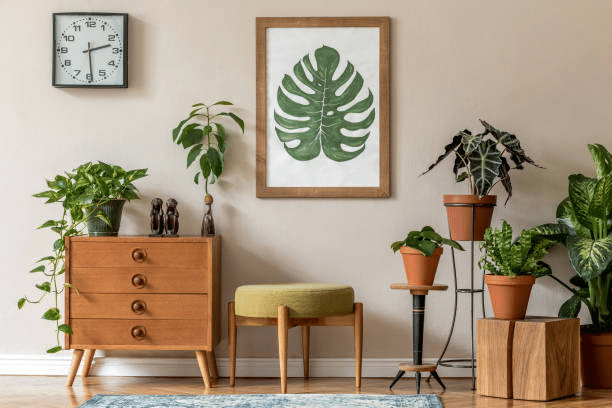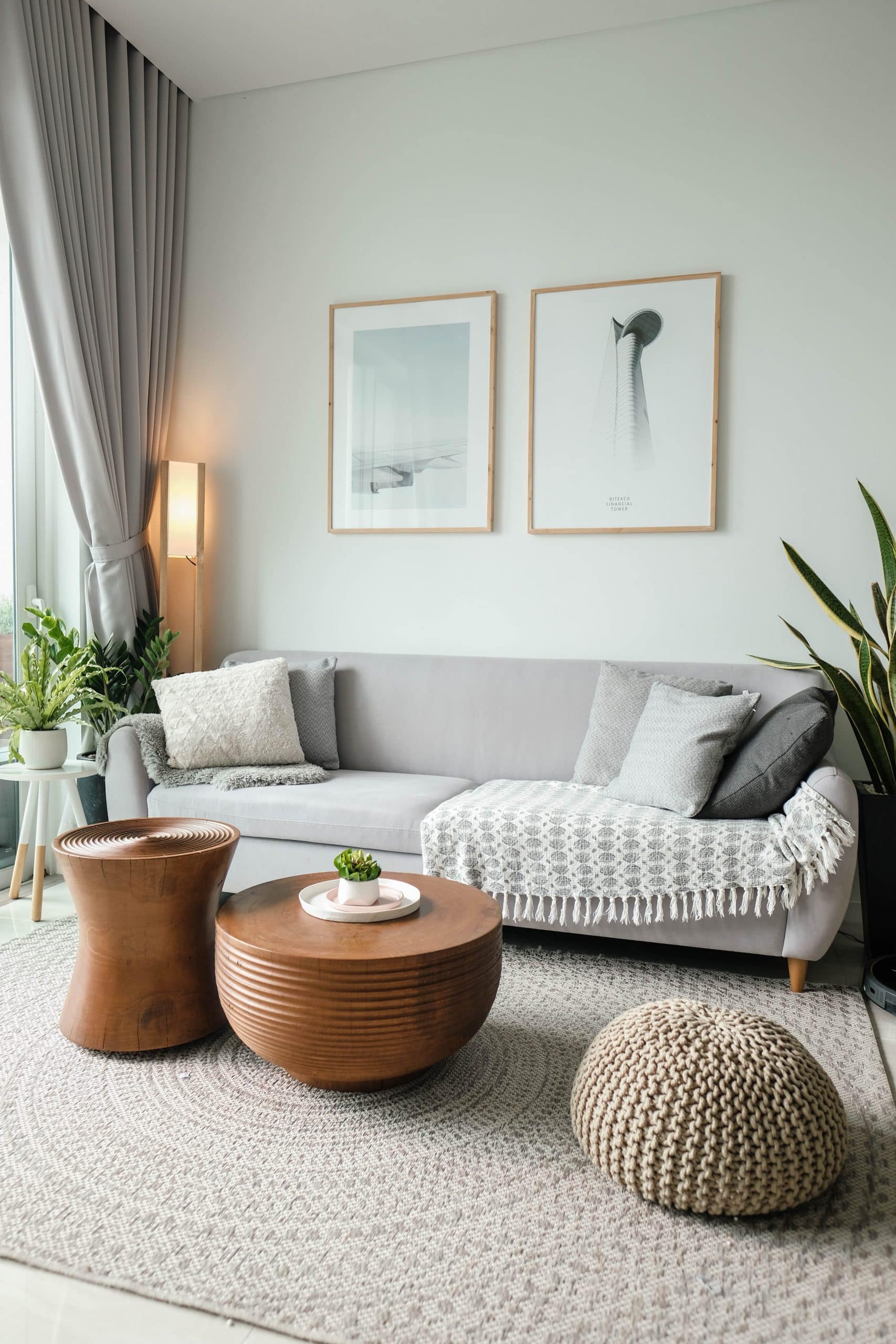Botanical Bliss: The Impact of Plants on Modern Home Design
In the realm of modern home design, the integration of plants has transcended mere aesthetics, evolving into a vital component of interior decor that enhances both visual appeal and the inhabitants’ quality of life. This trend, commonly referred to as “Botanical Bliss,” is driven by an increasing awareness of environmental issues and a growing interest in sustainable living practices.
This article explores the profound impact that plants have on modern home design, delving into both their aesthetic and functional contributions, as well as offering practical tips for incorporating greenery into various living spaces.
The Aesthetic Influence of Plants in Home Design

The incorporation of plants in home design is not a new concept; however, the ways in which they are used have become more innovative and integral to creating a harmonious space. Plants bring a vibrant, fresh, and serene ambiance to any room.
They introduce color and texture, making them versatile tools for designers looking to create dynamic spaces. For example, a large fiddle leaf fig can serve as a stunning focal point in a minimalist living room, while a series of small succulents can add subtle elegance to a modern kitchen.
Moreover, the flexibility of plant arrangements allows for personalization in home decor. Hanging planters can add depth and interest to an otherwise bland wall, and terrariums can offer a whimsical touch to desk spaces or shelves. Vertical gardens https://pafikampar.org/ are particularly effective in urban environments where space is limited, enabling residents to enjoy a touch of nature without sacrificing floor space.
Functional Benefits of Plants in Interiors

Beyond their beauty, plants play a crucial role in enhancing the living environment. They have been shown to improve air quality by absorbing toxins such as formaldehyde, benzene, and trichloroethylene from the air. A study by NASA concluded that plants can remove up to 87% of air toxins in 24 hours.
This natural purification helps to create a healthier living space, potentially reducing the occurrence of respiratory issues and other health problems caused by indoor pollutants.
Plants also contribute to psychological well-being. According to research, being around plants can reduce stress, increase creativity, and boost mood.
The presence of greenery in homes can create a calming and restorative environment, making it an ideal setting for relaxation and focus. Furthermore, the act of caring for plants can be therapeutic and give residents a sense of accomplishment and connection to nature.
Incorporating Plants into Home Design: Practical Tips
- Choosing the Right Plants: Select plants based on the specific conditions and space of your home. Consider factors such as light, humidity, and maintenance requirements. For low-light areas, species like snake plants or philodendrons are ideal, while succulents are perfect for sunny windowsills.
- Creative Placement: Utilize unusual areas for plant placement. Consider hanging pots from the ceiling, using wall-mounted planters, or incorporating built-in plant boxes in windows to maximize natural light. This not only saves space but also adds a unique design element to your home.
- Scale and Proportion: Pay attention to the scale and proportion of plants in relation to your space. Larger plants are best in spacious rooms as they can make small spaces feel cluttered. Conversely, a group of smaller plants can enliven a compact area without overwhelming it.
- Complementary Containers: The pots and planters you choose can also contribute to your home’s design https://www.rotarysantarun.org/. Materials like ceramic, wood, or even recycled items can complement your decor style. Choose colors and textures that fit with the overall theme of your room.
- Seasonal Changes: Swap out or rotate plants according to the seasons to keep your interior looking fresh and to cater to the changing light conditions throughout the year.
Challenges and Considerations
While integrating plants into home design is largely beneficial, it comes with its own set of challenges. Proper plant care can be time-consuming, and the health of plants can be affected by factors such as pest infestations, inadequate light, or improper watering. It’s important to educate oneself about the specific care requirements of each plant type.
Furthermore, individuals with allergies might need to select hypoallergenic plants that don’t produce airborne pollen. Consulting with a botanist or a nursery can provide guidance on the best plants for allergy sufferers.
Conclusion
The trend of incorporating plants into home design reflects a broader shift towards sustainable living and biophilic design. Plants offer a multitude of benefits, from enhancing the aesthetic appeal of our homes to improving air quality and psychological health.
By integrating plants thoughtfully, modern home design can achieve a balance between beauty and functionality, creating spaces that are not only visually appealing but also health-promoting and spiritually fulfilling. In embracing the botanical bliss, we reconnect with nature and bring its restorative powers into our everyday living spaces.







